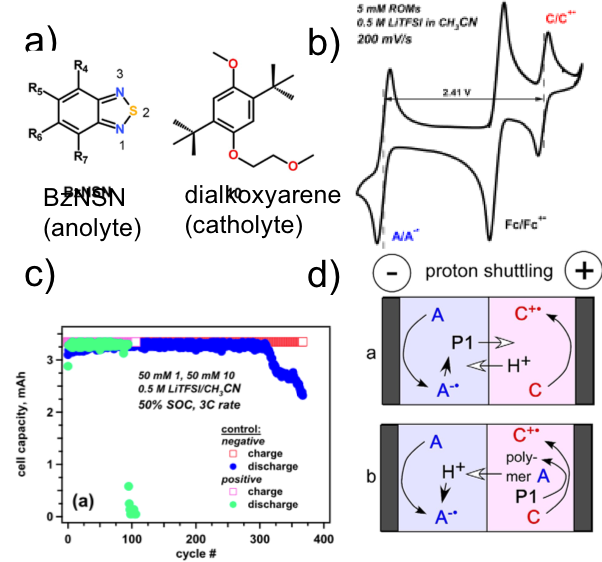
Scientific Achievement
Cycle and calendar lives are chemical stability metrics that reflect two regimes of redox flow battery use: (i) continuous charge/discharge cycling and (ii) long-term charge storage in external tanks. Here we examine how these two performance metrics are related to each other for negative charge carriers (anolytes) in nonaqueous flow cells. Surprisingly, little correlation was found between these two practically important metrics.
Significance and Impact
- This poor correlation suggests that cycling of the cells introduces parasitic reactions that are peculiar to this mode of operation only. A “proton shuttle” is shown to be a likely cause for cyclability loss.
Research Details
- Calendar life stability has been tuned over a wide range through materials and electrolyte engineering, and cyclability systematically studied.
- In many instances, the cycling performance is strongly affected by poor membrane selectivity, and especially by the inability of the microporous membrane to block proton migration between the two electrode compartments. More selective ion-exchange membranes are clearly needed.

